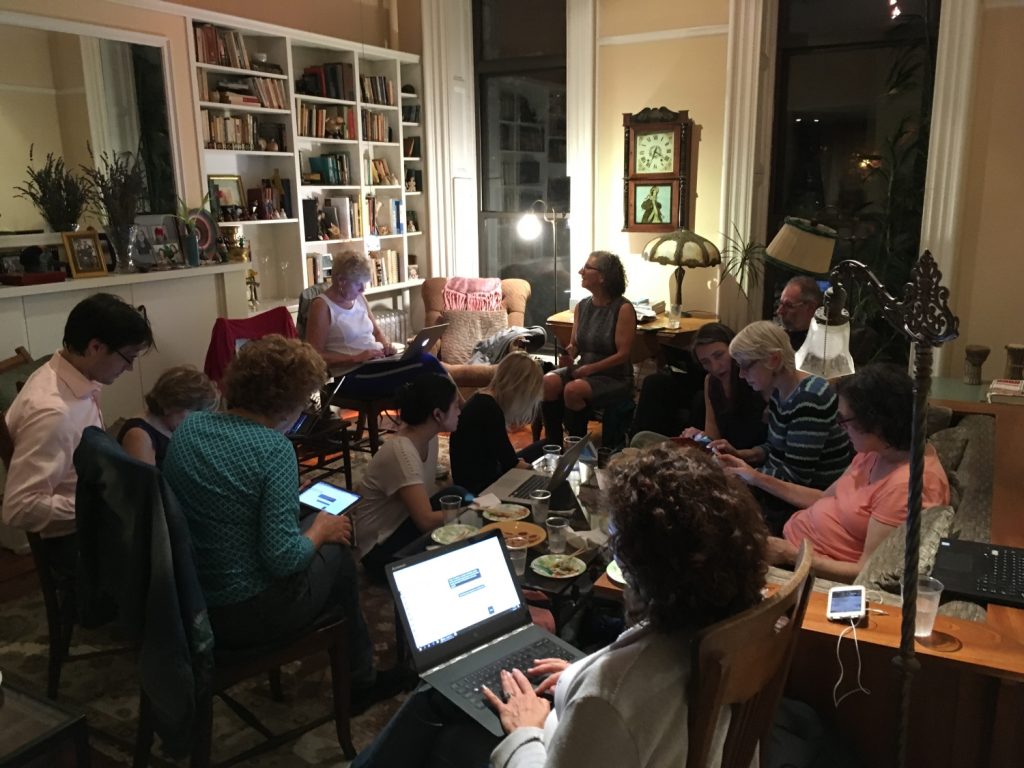Person-to-person (P2P) text messaging can be an effective campaigning tool in an increasingly noisy world. What can make it even more effective? Volunteers.
Daniel Souweine knows this well. He ran the first nationwide P2P texting program on U.S. Senator Bernie Sanders’ 2016 presidential campaign. Since then, he has worked closely with dozens of such programs as the CEO and co-founder of P2P texting platform Relay.
Below, he explains why you should consider creating space for volunteer texters and offers seven tips for doing it right.
One of my favorite of Becky Bond and Zack Exley’s Rules for Revolutionaries is “the revolution will not be staffed,” meaning the big change we seek requires work far beyond the capacity of paid organizers.
It’s hard to imagine a better demonstration of this rule than the recent explosion of P2P text messaging by volunteers in U.S. political campaigns and advocacy organizations.
The use of volunteer texters may be born of necessity but relying on volunteers has many advantages. Volunteers are helping campaigns win in the short term while unlocking long term power.
Campaigns need more and better volunteer opportunities
A silver lining of the rightward shifts in the world’s liberal democracies is the outpouring of people wanting to get involved and fight back.
Most campaigns and organizations struggle to plug new recruits into meaningful work. Volunteers need tasks they can learn quickly, that fit into their schedule, and are actually helpful.
P2P texting meets all of those criteria and then some. Texting also allows campaigns to make use of remote supporters because it can be done anywhere. This lets local volunteers focus on jobs that require “boots-on-the-ground.”
Volunteers love peer-to-peer texting
It’s no surprise, then, that volunteers love P2P texting. When I ran “Text for Bernie,” the program was so popular we literally turned away thousands of prospective volunteers.
One reason is how well texting fits into people’s lives. They never have to visit a field office or pick up a walk packet. They can send a few hundred texts, go run an errand, then come back an hour later and field responses.
Texting also allows campaigns to tap into pools of underutilized volunteers: introverts who tremble at the thought of phone banking or knocking on a stranger’s door, rural volunteers, and people with disabilities can all plug in via P2P texting.

Red2Blue volunteers in Brooklyn, New York, text for state legislative candidates in Virginia during the 2017 election. Although texting can be done from anywhere, volunteers can benefit from collaborating in person. Photo courtesy Daniel Souweine.
Focused volunteers > harried staff
P2P texting involves direct, often complicated conversations with voters, members and supporters. Some staff wonder: can we trust a volunteers to get those conversations right?
In my experience, the answer is a resounding yes. Indeed, I think well-trained volunteers are better at those conversations than staff for two reasons.
First, because they more directly identify with the texting recipients, they have more patience to answer the same questions over and over. Second, texting is generally a volunteer’s one responsibility on the campaign. Most texters will be more diligent about it than a staffer who’s being pulled in a million different directions.
Volunteers also free up paid staff to use their time on other projects by doing the legwork of engaging supporters.
People want to talk to other people like them
Finally, when considering relying on volunteers, think about who is on the other end of these texts: people just like them.
In my experience, messages from volunteers are more warmly received than messages from staff. I’ve seen many a P2P text turn into a long and genuine back-and-forth between volunteers and their recipients. That kind of exchange is not the same when the texter is a paid staff member.
Seven rules for getting it right with volunteer P2P texting
If you’ve gotten this far and you’re excited about using volunteers for your P2P texting operation, here’s some tips for setting your volunteers up for success:
- Train for conversations. Good texting training is less about the software (that’s the easy part) and more about getting people ready to have conversations. How do you translate responses into data? What do you do if you get a question you don’t know the answer to? How do you respond if someone is rude?
- Provide oversight. As with any volunteer activity, you have to stay on top of what your texters are doing. Give frequent feedback and constantly model what good texting looks like.
- Be available. Your volunteers are going to get into interactions they’re not sure how to handle. They need to be able to reach you and get help quickly.
- Prepare them. Prepare volunteers for what to expect. This is especially important if you’re “cold texting” (texting people you don’t have a previous relationship with), which will result in some unpleasant responses — just as with canvassing and phone banking. When volunteers know what’s coming, they’ll have a much better texting experience.
- Share the big picture. Each volunteer only gets to see a small slice of your texting program. When you let them know how things are going at the bigger level — what the texting goals are and how it’s helping the campaign — it makes them more effective and keeps them engaged.
- Challenge them. Volunteers can do much more than just send texts. Many Relay clients, such as the Beto O’Rourke campaign for U.S. Senate in Texas, use volunteers to load lists, set up scripts, and even do quality control. You create space for new leaders to emerge when you give capable volunteers real responsibility.
- Build community. Even though texting is usually done independently, everyone benefits when texters are connected to each other and can share strategies, lessons learned, and positive conversations.
P2P texting is such a great volunteer activity that I’ve seen some campaign veterans worry that once volunteers start texting, they’ll refuse to do anything else. I understand this fear but I’m much more concerned about the opposite problem — providing millions of newly engaged people ways to plug into the movement.
In my experience, texting often leads to deeper engagement. Supporters feel more comfortable making calls, sharing content, and donating once they’ve become involved as a texter.
On the road to the un-staffed political revolution, we need more on-ramps, not fewer. So let’s get those volunteers texting!
Top photo via Pixabay. CC0 Creative Commons.




